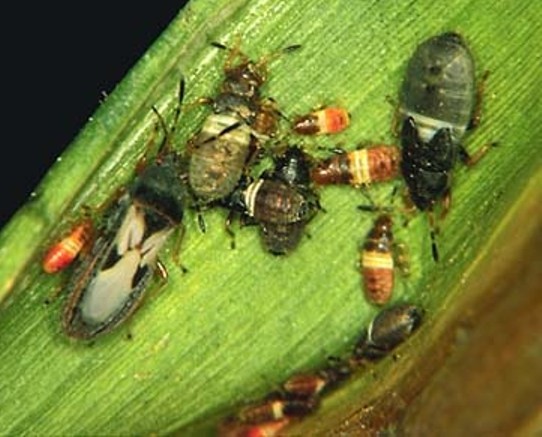If you often find the grasses on y our lawn aren’t as healthy as they should be or if the grasses are chewed, there could be some nasty bugs attacking your garden. If you can visibly see the bugs or upon inspection, detect damages done to your lawn, the next step would be to restore and prevent the damages further. Most common lawn pests, such as grubs, chinch bugs, webworms, and cutworms, typically feed on grass leaves, resulting in the development of dark brown spots, wilting leaves, and, if left unchecked, the formation of dead or dry patches in the grass. The brown spots in the grass with holes in the ground indicate a pest manifestation.
Most Common Lawn Pest Problems
Identifying chinch bugs, sod webworms is not very difficult. A lawn pest problems and infestation can be very difficult challenge for homeowners, especially in Spring and Summer. Identifying and addressing these common lawn pest problems is essential for maintaining a healthy and vibrant lawn. Here are some of the most common lawn pests:
Grub: The most common type of grub seen in a lawn is the white grub. They have an off-white half-inch body. They can come in groups and they mostly feed on grass roots, causing the grasses to die leaving brown patches. If you are seeing brown patches in your lawn, and the texture of the soil is spongy there is most likely a grub infestation. Another sign to identify grub infestation is birds or rodents easily digging up soil on your lawn.
Chinch Bugs: The chinch bugs are another common pest in Winnipeg, They are very tiny and sometimes hard-to-be-noticed. They are small bugs that like to feed on the saps of grass blades, which turn the leaves yellow and pale. The signs to understand if it’s a chinch bug problem are the grasses not responding to watering, good irrigation, and upon close inspection, if you can see small black and white bugs.
Armyworms: They are larvae of moths that feed on grass blades, causing irregular brown patches. The signs to detect armyworms are brown patches that spread quickly, especially in hot and dry weather.
Moles and Voles: Moles are insectivores that tunnel through the soil, while voles are rodents that feed on grass roots and bulbs. Signs of Infestation of moles or voles are surface tunnels, raised ridges in the lawn, and damaged roots.
Solutions & Preventive Measures to Lawn Pest Problems & Infestation
The lawn pests can be daunting but they can easily be prevented through a few measures, regular inspections, maintenance and using insecticides. If you are facing lawn pest problems you can get them out of your lawn by spraying insecticidal soap, neem oil and a particular type of repellent for each type of bug. To address issues with moles and voles, consider introducing natural predators. For worm problems, you can use bacterial insecticides and insecticidal treatments. If you find it challenging, hiring specialized services can guide you in effectively resolving these issues.
Conclusion:
Regular inspection, proper lawn maintenance, and early intervention are key to preventing and managing lawn pest problems. Integrated Pest Management (IPM) practices that combine cultural, biological, and chemical control methods can help maintain a healthy lawn with minimal environmental impact.

